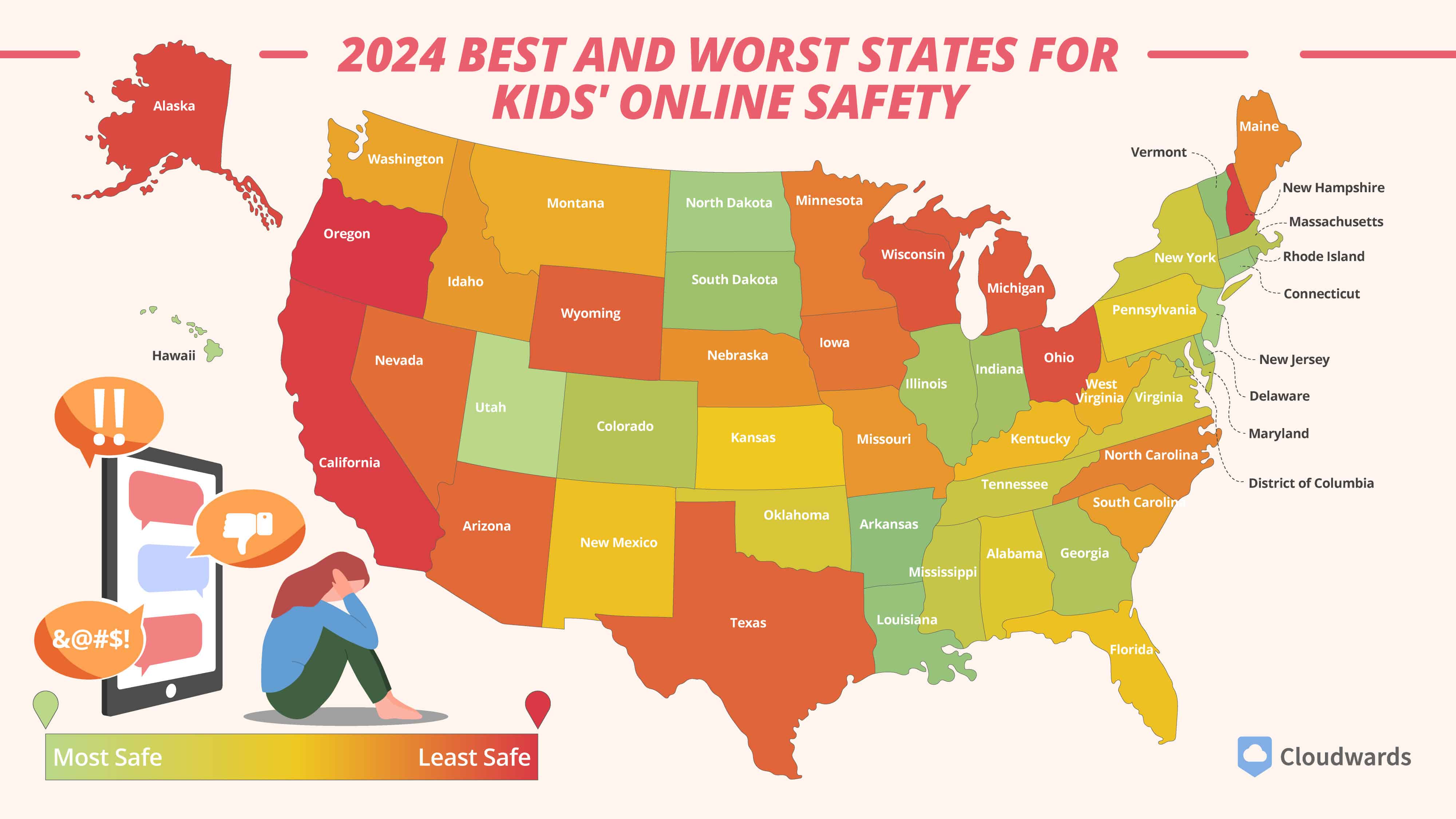
The internet is a valuable resource when it comes to educating and entertaining children, but from cyberbullying to online predators, there are plenty of reasons to be wary of letting kids surf the web — and some parts of the US are far less prepared to tackle the safety threats than others.
To find out where in the country is best and worst for kids' internet safety, Cloudwards compared the 50 states and Washington, DC, on online safety crimes and threats, cyberbullying prevalence, cyberbullying and online safety legislation and mental health support. The states were then ranked based on their overall scores.
A handful of the country's worst states for child online safety — including Oregon (51st), California (50th) and Alaska (48th) — belong to the West Coast. New Hampshire (49th) and Ohio (47th) made up the rest of the five lowest-ranking states on the list.
Utah was the safest state overall, thanks to its comprehensive online safety legislation, strong mental health support and moderate levels of online safety crimes and threats. Second-placed Hawaii would have taken the top spot if not for its low mental health ranking (25th in the country), while New Jersey came in third.
A number of East Coast states — including Connecticut, Delaware and Vermont — ranked highly on the list, while North Dakota, South Dakota, Indiana and Illinois stood out from other Midwestern states when it came to the country's safest spots.
While the study identified the best and worst states, no state's approach to issues around children's online safety is perfect, and some performances varied wildly from category to category. Texas, for example, received the highest possible score for cyberbullying and safety legislation, but ranked very poorly — 43rd in the country — overall.
Click image to enlarge
Via Cloudwards.

